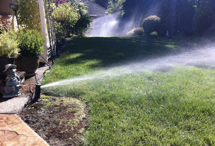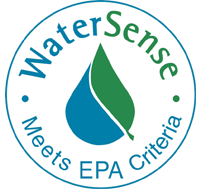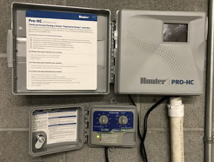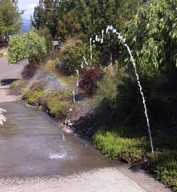Irrigation Control Technologies
Residential outdoor water use in the United States accounts for nearly 9 billion gallons of water each day, mainly for landscape irrigation. Experts estimate that as much as 50 percent of this water is wasted due to overwatering caused by inefficiencies in irrigation methods and systems. Irrigation control technologies can significantly reduce overwatering by applying water only when plants need it.

WaterSense Savings

WaterSense Savings Replacing a standard clock timer with a WaterSense labeled irrigation controller can save an average home nearly 7,600 gallons of water annually.
If every home in the United States with an automatic irrigation system installed and properly operated a WaterSense labeled irrigation controller, we could save $1 billion in water costs and 100 billion gallons of water across the country annually from not overwatering lawns and landscapes.
That's equal to the annual household water needs of nearly 1.2 million average American homes. WaterSense labeled irrigation controllers allow watering schedules to better match plants’ needs.
Visit www.epa.gov/watersense for more information.
What are Smart Controllers and how do they work?
WaterSense labeled irrigation controllers, which act like a thermostat for your sprinkler system by telling it when to turn on and off, use local weather and landscape conditions to tailor watering schedules to actual conditions on the site.

Instead of irrigating using a controller with a clock and a preset schedule, WaterSense labeled controllers allow watering schedules to better match plants’ water needs. With proper installation, programming, and maintenance, homeowners and businesses can use WaterSense labeled controllers instead of standard clock-timer controllers on their existing systems, and no longer worry about wasted water.
Benefits of Converting to a Smart Controller
A Smart Controller can reduce outdoor water use by monitoring and using information about site conditions (such as solar radiation, rain, wind, slope, soil, plant type) to apply the right amount of water to landscapes and help minimize unwanted runoff caused by overwatering.

By setting the device for a default maximum watering time based on the hottest time of year, irrigation run times are automatically reduced when less water is needed.
If significant rainfall occurs, the device’s rain sensor signals a delay or reduction in watering. If the property contains steep slopes or a soil type that absorbs water slowly, the Smart Controller can transmit multiple start times to irrigate efficiently while minimizing the potential for run-off.
Ways that a Smart Irrigation Controller May Not Save Water:
-
The controller is not set up properly
- Site characteristics not programmed into controller (sprinkler type, soil, plant type etc.)
- Daily weather data not accurate or available.
-
The controller cannot fix sprinkler system design issues
- Poor coverage, sprinkler spacing is too far apart or too close together.
- Sprinklers are not working properly.
- Mixed sprinklers on one zone (drip, rotating sprinklers and standard pop-up sprays).
- Runoff and overspray from sprinklers.
-
The Controller is missing necessary accessories
- Some irrigation controllers require an onsite weather station or rain sensors.
- No WIFI connection.
-
Historic Deficit Watering (under watering)
- If historically the landscape has been under watered, and if the new controller is now programmed to water these areas, then more water will be used.
- Note: A smart controller could be a benefit if the goal is to give the landscape the water it needs to be healthy.
-
Historic Hand Watering
- Typically, hand watering uses the least amount of water when it comes to watering the landscape. Setting up a smart controller may use more water than if watering by hand.
- Note: A smart controller could also help save water in this case if hand watering consists of leaving hoses on and accidentally forgetting to turn off the water.
